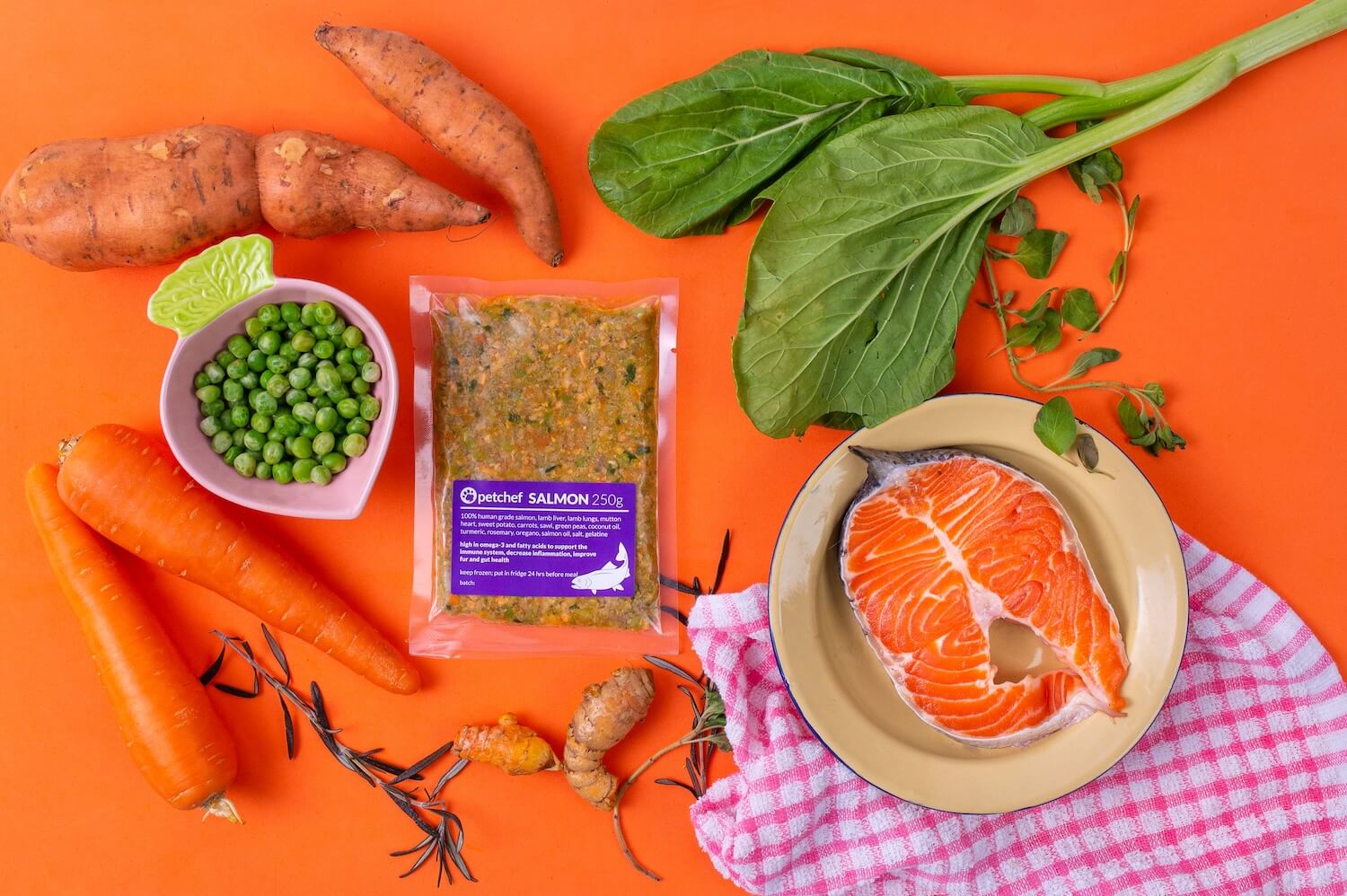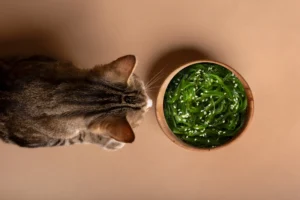Healthy meals are generally regarded as expensive meals for both humans and pets alike. That may be true if we’re having them from healthy food restaurants or cafes as the price factors in profits, rental and other expenditures to keep the business alive.
Aside from it being a more convenient and arguably better tasting alternative, it does not negate the fact that we too can learn to make delicious healthy meals at home.
Plus, eating a high quality healthy meal can make us feel a little better about ourselves as we know we’re nourishing our bodies with the right nutrients sourced from trusted places.
This can be said for our pets too.
Skipping the boring and repetitive taste of kibble as well as their complicated labels, fresh foods made from real meats appeal to their senses of smell and taste better thus making the meal or treat more enjoyable.
Hence, here’s how you can feed your pet healthy cooked food on a budget.
Perks Of DIY Fresh Human Grade Food For Pets
Typically, the ingredients for homemade pet food can be found in our go-to grocery stores (eg: Tesco, Giant, Jaya Grocer, wet markets). Some perks of feeding our pets human grade pet food includes:
- Knowing the ingredients are from safe and clean sources
- Ensuring our furkid is consuming fresh, nutritious and quality ingredients without chemical additives and flavourings
- Being able to use the same ingredients for our own meals
- Cost efficient as these fresh foods are often reasonably priced and sold in bulk
Ticking the boxes of convenience and assurance, the next thing you’d probably ask is:
What Should I Feed My Furkid?
A balanced diet is a diet that contains adequate amounts of all necessary nutrients required for the healthy growth and activity of your pet.
Hence, a simple formula to a balanced diet for dogs and cats would look like this.
🐶 For our omnivorous dogs
- 51% meats
- 46% vegetables
- 3% herbs and oils
🐱 For our obligate carnivorous cats
- 76% meats
- 6% vegetables
- 3% herbs and oils
- 15% moisture
With this in mind, here’s what we can add to our baskets during our next grocery run.
4 Things To Add To My Grocery List
1. Meats, Fish, Poultry
There’s a range of different poultry and meats that our furkids would potentially enjoy. For example, chicken, tuna, mackerel, beef, lamb or even salmon if you’re feeling fancy. Here’s what and how to choose these items for our pets consumption:
- Non marinated meat are the best option. Too much herbs and seasonings could harm our furkids health.
- Frozen or fresh mince meat are convenient options. They’re easier to weigh out without the extra effort of chopping them into smaller portions.
- Chicken feet to create a nutritious broth rich in glucosamine for joint and cartilage health.
On average, a price of minced meat could cost RM6 for 200 grams. Realistically, you’d probably be able to use a whole bag of meat to feed a medium to small dog for a week.
Besides that, a pack of chicken feet costs RM5 for 300 grams and all it takes is for you to snip off the claws and dump them into a pot to boil. The chicken feet broth can be added to their meal as a natural source of moisture and glucosamine.
2. Organs
Averaging at RM5 per packet, organs are a great way to give your pets meals a nutrient boost.
Generally, all animal organs sourced from fresh food markets are safe for your furkids consumption. However, as each part contains various levels of nutrients you can provide a mixture of organs that makes up to 25% of your pets diet. Do note that no single organ should account for more than 5-10%.
Here are some delicious organs that your furkid might enjoy:
- Liver: One of the most commonly-fed and readily available organs that contains more nutrients than muscle meat.
- Heart: Turkey hearts, chicken hearts, and duck hearts are exceptionally high in taurine. These are beneficial to both dogs and cats to reduce the risk of a heart disease called dilated cardiomyopathy.
- Kidney: In general they’re rich in selenium and a wide variety of vitamins. Beef kidneys in particular are a great source of Vitamin D.
- Chicken Gizzard: They’re high in protein, iron, minerals, and vitamins C, E and B. as well as glucosamine, which aids cartilage and arthritis health.
Read this to understand why organs are a crucial part of your dogs diet.
3. Produce
Served as snacks or in a meal, fruits and vegetables are a great natural source of fibre, vitamins and minerals for your pets. This is also why our recipes contain a suitable percentage of some fresh produce such as sweet potatoes and carrots.
That being said, your pets should not be put on a vegan or vegetarian diet as proteins are innately a large portion of their diets.
Here’s a list of vegetables suitable for both dogs and cats:
- Broccoli has a huge variety of vitamins, including vitamin K, vitamin C and potassium, which improves heart health and bone density.
- Carrots are a great source of vitamin A from beta-carotene), biotin, vitamin K, potassium and vitamin B6.
- Celery is rich in antioxidants that will help keep your pet young and healthy.
- Cucumbers have anti-inflammatory benefits as it contains lots of phytonutrients and antioxidants.
- Green beans are low-calorie and rich in fiber, which can help your pets feel full without the need for carbs as fillers. They’re also full of important vitamins and minerals, such as iron, calcium, and vitamins B6, A, C, and K.
- Sawi the green leafy vegetable contains more vitamin C than oranges which has great anti-inflammatory benefits to improve heart health while lowering the risk of diabetes.
- Spinach contains potassium, magnesium, and vitamins B6, B9 and E. It also contains high amounts of carotenoids, vitamin C, vitamin K, folic acid, iron and calcium.
- Yams/Sweet Potatoes are great for digestive health because they’re high in fiber and rich in the antioxidant beta-carotene.
As for treats, check out this list of pet-friendly fruits for dogs and cats.
4. Herbs
In our recipes, we utilise herbs and spices like rosemary, oregano and turmeric.
The flavonoids and antioxidants found in pet-friendly herbs can help the body’s immune system combat some of the diseases commonly associated with aging, including canine cognitive dysfunction, cancer, and reduced immune function.
Here are some pet-friendly herbs you can use fresh or dried in a small sprinkle (a pinch for small dogs, a teaspoon for large dogs) for fresher breath as well as additional nourishment and health:
- Basil is well-known for its delicious role in pesto and has antioxidant, antiviral, and antimicrobial properties.
- Oregano is high in antioxidants and flavonoids and is reported as an antimicrobial. This non-toxic herb has been used to help with digestive problems, diarrhea, and gas.
- Parsley is a common herb found sprinkled on chinese dishes. It’s tap root is a rich source of vitamin C and iron. As a general blood tonic and diuretic it helps with conditions such as bladder stones and gravel, prostate problems and joint stiffness. Parsley leafs on the other hand can soothe the lining of the bladder and help with cystitis.
- Peppermint leaves eases flatulence and colic and helps digestion.
- Rosemary has been shown to act as an antioxidant and is high in iron, calcium, and Vitamin B6.
- Turmeric is rich in bioactive compounds and antioxidants.
What NOT to add to your pets meal: Garlic and onions may make human food taste great but they are actually toxic to dogs. These spices in particular can damage red blood cells, causing your dog to become sleepy, lethargic and weak.
Other than that, here’s an A-Z on herbs and essential oils that are great for dogs and cats.
5. Oils
Speaking of oils, pet food should be cooked with minimal to no cooking oil. The addition of coconut oil or fish oil is a great source of fatty acids which are beneficial to your pets skin, coat, and dental health. It also aids brain function and growth development.
A small amount such as 1 teaspoon to every 4.5KG of your pets weight is sufficient. An overfeeding of oils could result in oily stools and liver issues.
Cheaper alternatives to coconut and fish oils would be corn oil, canola oil and soybean oil as they contain preformed alpha-linolenic and linoleic acids.
Cooking, Storing and Serving Homemade Cooked Food
The idea is to avoid cooking them at extremely high temperatures as it would destroy the naturally found nutrients in the food.
Hence, boiled, steamed or sauteed without oil and seasoning are easy ways to prepare cooked food for your pets at home. Vegetables can be blanched and blended or simply chopped into smaller bits and mixed into the meal.
The food can then be stored in the fridge for a few days or the freezer for longer keeping.
Before serving, simply leave it out to thaw or preheat them just like how we would have our leftovers from the fridge.
By cooking and preparing the food in bulk it would minimise our daily effort of having to prepare a fresh meal for our pets. Unless you do find the process enjoyable and therapeutic, then by all means, why not 😉
-//-
In conclusion, serving our pets nutritious homemade meals does not have to cost a bomb. By sourcing the ingredients from local grocers and having fun preparing them, it also teaches us how to be more conscious of the nutrients we’re consuming for ourselves and feeding our pets.
Should you need some guidance or inspiration for your pets first homemade fresh food, here’s our menu for you to browse through.
However, if you’re too busy to DIY or would rather have affordably priced fresh pet meals delivered to you at your convenience, you should give us a go.
With a monthly subscription, your pet will be able to enjoy human-grade petfood that are freshly cooked and free of preservatives—without you having to worry about all the cooking and cleaning. You also don’t have to worry about not getting the nutrients in the right ratio, since all Petchef meals are already nutritionally balanced and has all the necessary vitamins for your pet.
Click here for a quick chat and request a meal sample on us. All you’ll have to do is tell us all about your pet and our friendly Petchef Advisors will be able to work out a suitable meal plan with you.





















